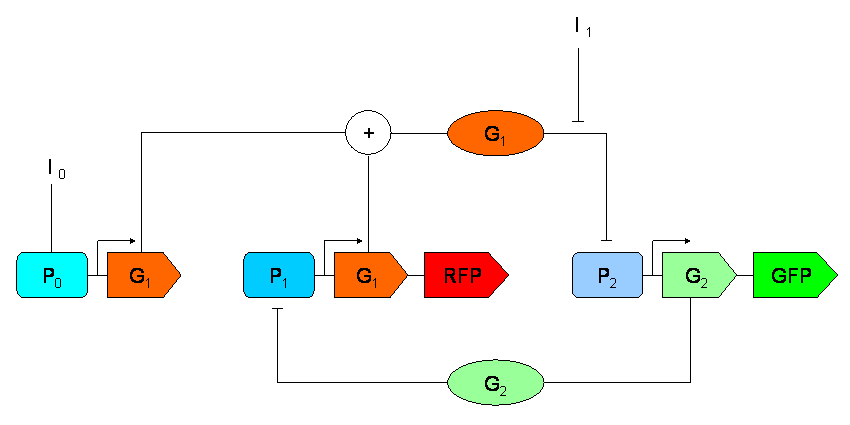Team:Bologna/Project
From 2008.igem.org
Rita.morini (Talk | contribs) |
Rita.morini (Talk | contribs) |
||
| Line 17: | Line 17: | ||
== '''Overall project''' == | == '''Overall project''' == | ||
| - | [[Image:Immagine_progetto_1.jpg|450px|right|thumbnail]] | + | [[Image:Immagine_progetto_1.jpg|450px|right|thumbnail|Logic circuit]] |
<div style="text-align:justify;"> | <div style="text-align:justify;"> | ||
Our team works upon the realisation of a biological memory, utilising a bacterial colony embedded inside a solid media. Each bacterium, as well as cluster of them will assemble into a mnemonic matrix, microscopically arranged into row-column pattern analogus to conventional systems. | Our team works upon the realisation of a biological memory, utilising a bacterial colony embedded inside a solid media. Each bacterium, as well as cluster of them will assemble into a mnemonic matrix, microscopically arranged into row-column pattern analogus to conventional systems. | ||
Revision as of 16:04, 1 August 2008
| HOME | THE TEAM | THE PROJECT | PARTS SUBMITTED TO THE REGISTRY | MODELING | NOTEBOOK |
|---|
Contents |
Overall project
Our team works upon the realisation of a biological memory, utilising a bacterial colony embedded inside a solid media. Each bacterium, as well as cluster of them will assemble into a mnemonic matrix, microscopically arranged into row-column pattern analogus to conventional systems. Precisely, our goal is to obtain a programmable biological memory, homologous to a well established system already used commonly in electronic systems, id est EPROMs (Erasable Programmable Read Only Memory). UV beams and differential tension used in the aforementioned system will be respectively substituted by input l1 and l0 as in figure. The logic system consists of a toggle switch specifically modified to optimise and ease the reaching of the two levels and strengthen their stability over time. Additionally, the apparent redundance within the circuitry would allow higher level of modularity. For instance, it is possible to maintain unaltered the fundamental "brick" via feedback provided by the above mentioned toggle switch; this would allow substitution of the lo Po couple with another compatible module of interest. Another useful and funny application would also be the generation of images via fluorescent emissions from the matrix itself. In fact it would be possible to finely tune the frequency of the light representing each pixel, de facto chaging also the resulting colour of such pixel within the 2D picture in output.
 "
"

